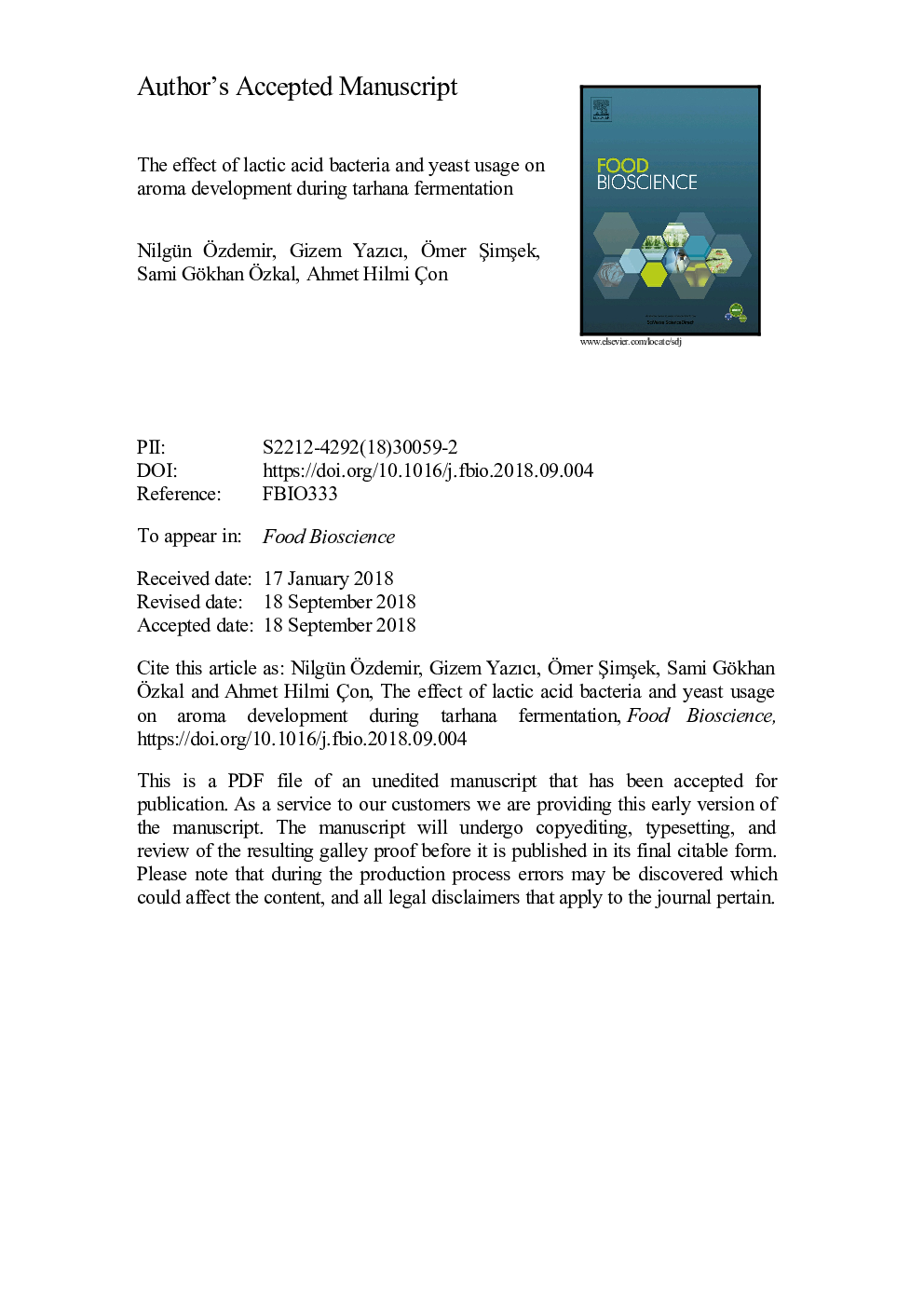| کد مقاله | کد نشریه | سال انتشار | مقاله انگلیسی | نسخه تمام متن |
|---|---|---|---|---|
| 11029016 | 1646687 | 2018 | 29 صفحه PDF | دانلود رایگان |
عنوان انگلیسی مقاله ISI
The effect of lactic acid bacteria and yeast usage on aroma development during tarhana fermentation
ترجمه فارسی عنوان
اثر مصرف باکتری های اسید لاکتیک و مخمر بر رشد عطر در فرآیند تارنه
دانلود مقاله + سفارش ترجمه
دانلود مقاله ISI انگلیسی
رایگان برای ایرانیان
کلمات کلیدی
موضوعات مرتبط
مهندسی و علوم پایه
مهندسی شیمی
بیو مهندسی (مهندسی زیستی)
چکیده انگلیسی
The aim of this study was to select starter cultures by showing correlation between the volatiles and the starter cultures used during fermentation with the goal of producing a standard and desirable tarhana. This traditional fermented cereal product is produced with fermentation of a dough prepared by mixing wheat flour, yoghurt, some vegetables and spices. To understand the relationship between aroma development and certain starter cultures through both statistical and sensorial approaches, 11 tarhana dough samples were prepared using three lactic acid bacteria (Lactobacillus farciminis PFC83, Lactobacillus casei PFC90, Lactobacillus alimentarius PFC91) or two yeast (Pichia kudriavzevii PFC12, Candida humilis PFC138) strains, as mono- or co-culture. Ester and alcohol volatiles accumulated during fermentation in the tarhana dough samples with starter, triggered by the use of starter cultures. Additionally, it was noted that lactic, succinic and acetic acids were the most prevalent organic acids to be produced in the dough samples during fermentation, and a partial least squares regression analysis showed that L. alimentarius PFC91 and P. kudriavzevii PFC126 were correlated with the accumulation of esters and these organic acids. Moreover, a sensory analysis showed that tarhana dough samples prepared using the L. alimentarius PFC91 and P. kudriavzevii PFC126 strains obtained the most acceptable scores. In conclusion, this study showed a strong correlation between aroma development in tarhana and starter usage in which L. alimentarius PFC91 is co-cultured with P. kudriavzevii PFC126, contributing to the accumulation of the volatile aromatic compounds and organic acids that are responsible for desirable aromatic tarhana.
ناشر
Database: Elsevier - ScienceDirect (ساینس دایرکت)
Journal: Food Bioscience - Volume 26, December 2018, Pages 30-37
Journal: Food Bioscience - Volume 26, December 2018, Pages 30-37
نویسندگان
Nilgün Ãzdemir, Gizem Yazıcı, Ãmer ÅimÅek, Sami Gökhan Ãzkal, Ahmet Hilmi Ãon,
